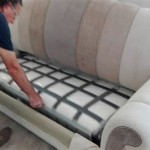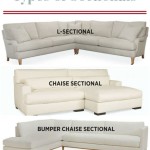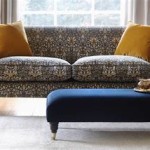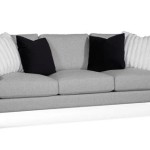Which Material Is Best For Sofa Set Cushions And Throws?
Selecting the ideal material for sofa set cushions and throws is a crucial decision that impacts both the aesthetic appeal and the functional comfort of a living space. A variety of materials are available, each possessing distinct characteristics relating to durability, texture, maintenance requirements, and cost. Careful consideration should be given to these factors to ensure the chosen material aligns with lifestyle needs and design preferences.
The optimal choice often depends on a balance between visual appeal, practical considerations, and personal preferences. A deep dive into the properties of common materials can illuminate the best option for specific circumstances. The goal is to create a harmonious and inviting atmosphere that stands the test of time and daily use.
Understanding the Key Material Options
Several materials are commonly used for sofa set cushions and throws, each offering unique advantages. These materials can be broadly categorized into natural fibers, synthetic fibers, and blends.
Natural Fibers: Natural fibers are derived from plants or animals and are often lauded for their breathability, softness, and environmentally friendly characteristics. Common examples include cotton, linen, wool, and silk.
Cotton: Cotton is a versatile and widely used natural fiber. It is known for its softness, breathability, and affordability. Cotton cushions and throws are generally comfortable and easy to clean, making them a popular choice for everyday use. However, cotton is susceptible to staining and may not be as durable as other materials, especially in high-traffic areas. It also tends to wrinkle easily.
Linen: Linen is a natural fiber derived from the flax plant. It is known for its strength, durability, and resistance to moths and mildew. Linen has a distinct texture and a natural sheen that adds a touch of elegance to any sofa set. While linen is highly durable, it is also prone to wrinkling and can be more expensive than cotton. It requires careful laundering to maintain its appearance and prevent shrinkage.
Wool: Wool is a natural fiber derived from sheep. It is prized for its warmth, softness, and resilience. Wool cushions and throws provide excellent insulation, making them ideal for colder climates. Wool is also naturally stain-resistant and flame-retardant. However, wool can be expensive and may require professional cleaning. Some individuals may also be sensitive to wool, experiencing itchiness or allergic reactions.
Silk: Silk is a luxurious natural fiber produced by silkworms. It is known for its smooth texture, lustrous sheen, and elegant drape. Silk cushions and throws add a touch of sophistication to any living space. However, silk is delicate and requires special care. It is susceptible to water stains, fading, and damage from sunlight. Professional cleaning is typically recommended for silk items.
Synthetic Fibers: Synthetic fibers are man-made materials that are designed to mimic the properties of natural fibers while offering enhanced durability, stain resistance, and affordability. Common examples include polyester, acrylic, and rayon.
Polyester: Polyester is a synthetic fiber known for its durability, wrinkle resistance, and stain resistance. Polyester cushions and throws are easy to clean and maintain, making them a practical choice for households with children or pets. Polyester is also relatively inexpensive, making it an accessible option for budget-conscious consumers. However, polyester is not as breathable as natural fibers and may feel less comfortable in warm weather. It can also generate static electricity.
Acrylic: Acrylic is a synthetic fiber that resembles wool in texture and appearance. It is known for its softness, warmth, and resistance to fading. Acrylic cushions and throws are a good alternative to wool for individuals who are sensitive to wool or prefer a more affordable option. However, acrylic is less durable than wool and may pill or stretch over time. It is also more prone to static electricity.
Rayon: Rayon is a semi-synthetic fiber derived from cellulose. It is known for its soft texture, drape, and ability to mimic the look and feel of silk. Rayon cushions and throws offer a luxurious aesthetic at a more affordable price point. However, rayon is weak when wet and requires careful handling. It is also prone to wrinkling and may shrink during laundering. Dry cleaning is often recommended for rayon items.
Blends: Blended fabrics combine the properties of two or more fibers to create a material that offers a balance of desirable characteristics. Common examples include cotton-polyester blends, linen-cotton blends, and wool-synthetic blends.
Cotton-Polyester Blends: Cotton-polyester blends combine the breathability and comfort of cotton with the durability and wrinkle resistance of polyester. These blends are easy to care for and offer a good balance of affordability and performance. They are a popular choice for everyday use.
Linen-Cotton Blends: Linen-cotton blends combine the strength and durability of linen with the softness and affordability of cotton. These blends offer a natural texture and a comfortable feel. They are less prone to wrinkling than pure linen and are easier to care for.
Wool-Synthetic Blends: Wool-synthetic blends combine the warmth and resilience of wool with the durability and stain resistance of synthetic fibers. These blends offer a good balance of performance and affordability. They are often used in cushions and throws that require both warmth and durability.
Factors to Consider When Choosing Cushion and Throw Materials
Several factors should be considered when selecting the best material for sofa set cushions and throws. These factors include durability, comfort, maintenance, aesthetics, and cost.
Durability: The durability of a material refers to its ability to withstand wear and tear over time. Materials that are used in high-traffic areas, such as living rooms, should be durable enough to withstand daily use and frequent cleaning. Durable materials include linen, polyester, and wool.
Comfort: The comfort of a material refers to its feel against the skin. Materials that are used for cushions and throws should be comfortable to touch and sit on. Comfortable materials include cotton, wool, acrylic, and rayon.
Maintenance: The maintenance requirements of a material refer to the ease with which it can be cleaned and cared for. Materials that are easy to clean and maintain are ideal for households with children or pets. Easy-to-maintain materials include polyester, cotton-polyester blends, and linen-cotton blends.
Aesthetics: The aesthetics of a material refer to its visual appeal. Materials that are used for cushions and throws should complement the overall design of the living space. Aesthetically pleasing materials include silk, linen, and textured wool.
Cost: The cost of a material refers to its price. The budget that is allocated should be considered when selecting a material for sofa set cushions and throws. Affordable materials include cotton, polyester, and acrylic. More expensive materials include silk and high-quality wool.
Specific Recommendations Based on Lifestyle and Needs
The ideal material choice is highly dependent on individual circumstances. Several specific scenarios and the corresponding material recommendations are outlined below:
Households with Children and Pets: For households with children and pets, durability and ease of maintenance are paramount. Polyester or cotton-polyester blends are excellent choices. These materials are resistant to stains, easy to clean, and can withstand the rigors of daily use. Darker colors and patterns can also help to conceal stains and dirt.
Individuals with Allergies: For individuals with allergies, hypoallergenic materials are essential. Cotton, linen, and tightly woven synthetic fabrics like microfiber are good options. These materials are less likely to trap dust mites and other allergens. Avoid wool or heavily textured fabrics, as they can be irritants.
Those Seeking Luxury and Elegance: For those seeking a luxurious and elegant aesthetic, silk or high-quality linen are excellent choices. Silk adds a touch of sophistication and glamour, while linen offers a refined and natural look. However, these materials require more delicate care and are best suited for low-traffic areas.
Budget-Conscious Consumers: For budget-conscious consumers, cotton or polyester are practical and affordable options. These materials offer good value for money and are readily available in a wide range of colors and patterns. While they may not be as durable or luxurious as other materials, they are a reliable choice for everyday use.
Environmentally Conscious Buyers: For environmentally conscious buyers, natural fibers like organic cotton, linen, or recycled materials are preferable. These materials are sustainable and biodegradable. Look for certifications like GOTS (Global Organic Textile Standard) to ensure that the materials are produced in an environmentally responsible manner.
Ultimately, selecting the best material for sofa set cushions and throws involves a careful assessment of individual needs, preferences, and budget constraints. By considering the properties of different materials and the factors outlined above, one can make an informed decision that enhances the comfort, style, and longevity of the living space.

Throw Pillows The Complete Guide 100 Of My Faves Parts 1 2 Laurel Home

Pillow Fabric Best For Throw Pillows Sunbrella Outdoor

How To Mix And Match Throw Pillows For Your Sofa Artiss

A Guide To The Best Fillings For Sofa Seat Cushions

How To Style Drape A Throw Blanket On Your Couch Society6

How To Pair Diffe Materials Our Interior Designer S Guide Swyft

The Right Pillows For A Leather Sofa

Feathers

The Best Fabric For A Sofa Choosing Right Material Your Home

How To Choose The Right Outdoor Furniture Upholstery Fabric








